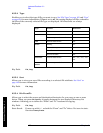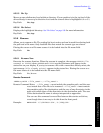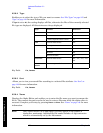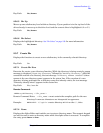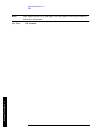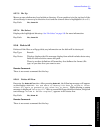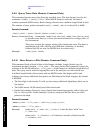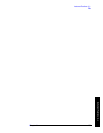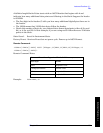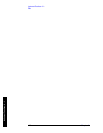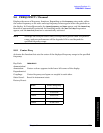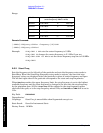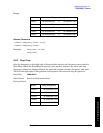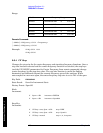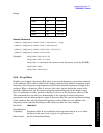
160 Chapter2
Instrument Functions: A - L
File
Instrument Functions: A - L
2.5.11 Set Data Byte Order (Remote Command Only)
This command selects the binary data byte order for data transfer. It controls whether
binary data is transferred in normal or swapped mode. Normal mode is when the byte
sequence begins with the most significant byte (MSB) first, and ends with the least
significant byte (LSB) last in the sequence: 1|2|3|4. Swapped mode is when the byte
sequence begins with the LSB first, and ends with the MSB last in the sequence: 4|3|2|1.
State Saved: Survives
Preset but not power cycle. Not saved in Instrument State.
Factory Preset: Normal
Remote Command:
:FORMat:BORDer NORMal|SWAPped
:FORMat:BORDer?
Example: FORM:BORD SWAP
2.5.12 Format Numeric Data (Remote Command Only)
This command changes the format of the data. It specifies the format used for trace data
during data transfer across any remote port. REAL and ASCII formats will format trace
data in the current amplitude units. The format of state data cannot be changed. It is
always in a machine readable format only.
NOTE One-button measurement functions only support Binary Real 32, Binary Real
64, and ASCII data formats.
When in Spectrum Analysis mode using older instrument firmware, you were only allowed
to change the format of trace type data that was returned using TRACe[:DATA]. With this
old firmware, other types of measurement data was only available in the ASCII format.
(That is, data returned using FETCh, MEASure and READ commands while in Signal
Analysis mode.)
For corrected trace data (:TRACe[:DATA] with parameter <trace_name>), REAL and
ASCII formats will provide trace data in the current amplitude units. INTeger format will
provide trace data in mdBm. The fastest mode is INTeger,32. However, some measurement
data will not fit in 32-bit integers.
ASCII - Amplitude values are in amplitude units separated by commas. ASCII format
requires more memory than the binary formats. Handling large amounts of this type of
data, takes more time and storage space.
Integer,32 - Binary 32-bit integer values in internal units (dBm), in a definite length
block.
Real,32 (or 64) - Binary 32-bit (or 64-bit) real values in amplitude units, in a finite
length block. Transfers of real data are done in a binary block format.



